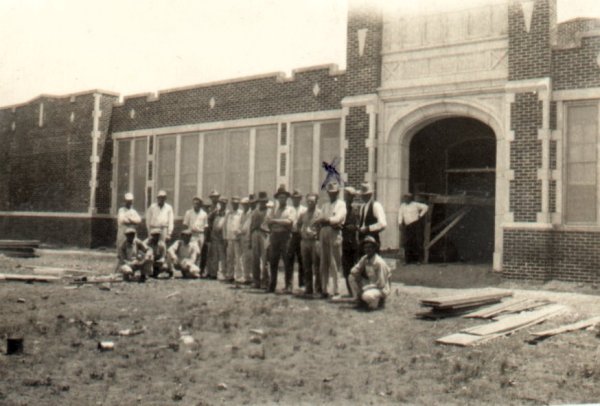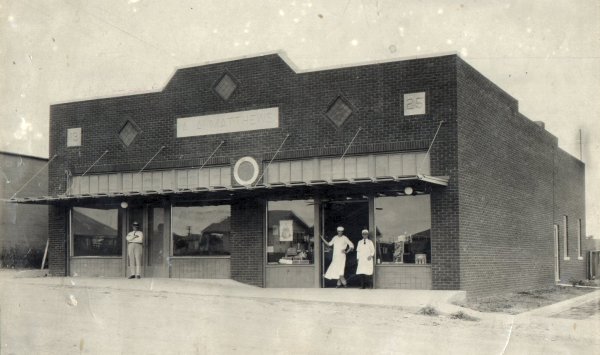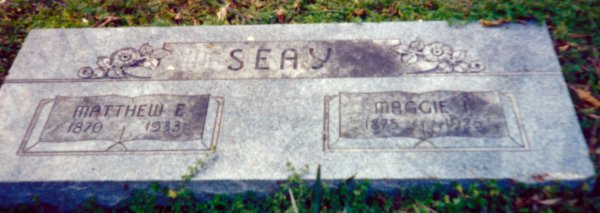|
The Seay Family
Seay Family By Steven R. Butler I am a Seay descendant by virtue of the marriage of my grandfather William Ollie Jenkins to my grandmother, Ida Lee Seay, who was the daughter of Matthew Elijah Seay. Unfortunately, we do not know very much about this family. Their origins in America have been lost to history. They do not appear to have been prominent citizens in any of the places where they resided. For this reason and also because they seem not to have remained in any one place for any great length of time, particularly during the nineteenth century, public records regarding members of this family are scant. Joseph Seay It's believed that our earliest known Seay ancestor was Joseph Seay, said to have been born about 1695 in colonial Virginia. He reportedly died about 1750 in Orangeburg District, South Carolina. Barnet See or Seay Our next known Seay ancestor is believed to be Barnet Seay, born about 1720 in Orangeburg District, South Carolina, and died there about 1785. His wife was reportedly Mary M. Snellgrove. On October 4, 1769, the royal governor of South Carolina granted Barnet Seay 150 acres of land on the Saluda River. (Royal Land Grants Index, n.p.; Royal Land Grant Memorials Index, p. 201; Royal Land Grant Memorials Book 10, p. 26; Royal Land Grant Plats Index, p. 448; Royal Land Grant Plats Book 11, p. 78.).) Unfortunately, the county records for Orangeburg were burned by the Union Army during the Civil War. Consequently, we do not have any deed, will, or probate records for Barnet Seay. Abraham See or Seay Abraham Seay (also spelled "See"), believed to be a son of Barnet See or Seay, was probably born in Orangeburg District, South Carolina about 1738 and died in Lexington County, South Carolina (which was formed from Orangeburg) about 1783. His wife was reportedly Susannah Snellgrove. During his lifetime, Abraham Seay received two land grants from the royal governor of South Carolina:
Abraham See or Seay was a veteran of the American Revolutionary War. In 1784, his widow, Susannah, applied for compensation for his service in Colonel Thompson's South Carolina militia, saying that the State of South Carolina still owed him for 10 days back pay at 10 shillings per day. Susannah See or Seay was listed in the 1790 federal census for Orangeburg District, Carolina. There was one other female in her household and no males. She was also enumerated in the 1820 federal census for Lexington County, South Carolina (formed from part of Orangeburg). At that time there were only two persons in her household, , one female over 45 (Susannah herself, obviously), and one male slave over the age of 45. In 1800, Susannah See or Seay received a South Carolina state land grant for 154 acres in Orangeburg District. (South Carolina Land Grant Index, p. 544; South Carolina Land Grant Book 46, p. 300.) Apparent sons Michael, Nicholas, and Peter also received state land grants (see "Michael See or Seay," next sections.
From all appearances, Susannah See or Seay died sometime between 1820 and 1830. It is not known where either she or her husband, Abraham, are buried. Michael See or Seay It is now believed that Michael Seay, born sometime between 1760 and 1770, probably in Orangeburg District (now Lexington County), South Carolina, was a son of Abraham See or Seay. For several years, I thought that he might be a son of William See, who is listed in the 1790 federal census for Orangeburg District, South Carolina as having a wife, two sons over the age of sixteen (one of whom could have been Michael), three sons under the age of sixteen, and three daughters, ages unknown. William See also owned one slave. In addition to William Seay, there were four other individuals in Orangeburgh District, South Carolina in 1790 with the surname Seay: Anthony, John, Nicholas, and Susannah. The former three may have been brothers to Michael Seay. Because she is listed as the head of a family and because there were no males over the age of sixteen in her household, Susannah Seay was almost certainly Michael's mother and the widow of Abraham Seay. It appears that Michael Seay was married twice, the first time about 1790, when he was twenty or thirty years old. Another researcher, Lynn Marie Francher, thinks Michael's first wife may have been a Parker. Our first public records of Michael Seay are the three South Carolina state land grants that he received between 1783 and 1807, as follows:
Unfortunately, the land plat books for these three grants are either missing or show the incorrect book and page number.
Michael Seay was enumerated in the 1800 federal census for Lexington District, South Carolina, which was formed from a portion of Orangeburg District. It indicates that, in addition to himself and his wife (whose name is unknown), there were two male children under the age of ten in the household, two girls under the age of ten, and one female child between the ages of ten and fifteen. He had no slaves. Here are the names of his known children by this first marriage:
The 1810 federal census for South Carolina finds Michael Seay still living in Lexington County, South Carolina, with a household that consisted of one male under 10, two males 10 thru 15, one male 26 thru 44 (obviously Michael), one female under 10, two females 10 thru 15, and one female 26 thru 44 (obviously Michael's wife). No slaves. From all appearances, Michael's wife died sometime after 1800 because he was married a second time in 1814, probably in Lexington District, South Carolina. At the time of his second marriage, he was between forty-six and fifty-six years of age. His bride was Clarissa Jane Clark, daughter of Revolutionary War veteran Gregory Clark and his wife Lurany or Lurainy Parker, of Orangeburg District (later Lexington), South Carolina. Born about 1788, Clarissa would have been approximately twenty-six years old at the time of her marriage to Michael Seay. Our next public record of Michael Seay is the 1820 federal census for Rutherford County, Tennessee, in which his surname is spelled See. Nicholas See, who was named in the 1790 Orangeburg District, South Carolina federal census, was also listed in the same county, which lends strength to our proposition that the two men were brothers. In this census, Michael's household is shown as consisting of two males under 10, one male 10-15, two males 16-25, one male over 45 (obviously Michael), three females under 10, two females 10-15, and one female 26-44 (Clarissa Jane, obviously) In 1824, Michael Seay (spelled "Seay") purchased 160 acres of land in Rutherford County from the State of Tennessee, for 12 ½ cents per acre. Unfortunately, the boundary description is based on trees and stakes, which make it hard to determine the precise location. Michael Seay is next listed in the 1830 federal census for Hardin County, Tennessee. At that time he was between the ages of 60 and 70 and had in his household two male children under 5, one male between the ages of 5 and 10, one male child between the ages of 15 and 20, two female children between the ages of 10 and 15, and one female child between the ages of 15 and 20. His wife's age was between 40 and 50, which is consistent with what we've been told about Clarissa's birth year. Here are the names of all of Michael and Clarissa Seay's known children (not necessarily in order):
Michael Seay was named in the 1840 census for Pontotoc County, Missippi, at which time he was between 70 and 80 years of age. Other researchers report that he died in Pontotoc County on 30 October 1843. His widow Clarissa was listed in the 1850 federal census, living with the family of her son, John J. Seay, in Itawamba County, Mississippi. In 1860 Clarissa, age 72, was living with son Daniel and family in Newton County, Missouri. In 1870 she was living with the family of her daughter Arcena Seay Cook in Titus County, Texas, where Clarissa probably died and was buried. Curiously, there are no deeds on file for Michael Seay, as either grantor or grantee, in Rutherford County, Tennessee, Hardin County, Tennessee, or Pontotoc County, Mississippi.
Mathew Alezxander (or Abraham) Seay
Both Rutherford and Hardin counties are located in the western portion of Tennessee, where the famous frontiersman David Crockett, who at that time had not yet risen to national fame, also settled. We have no reason to believe that the Seays knew Crockett personally but they surely knew of him. It's not improbable that when he was running for a seat in the state legislature and later, for Congress, they may have caught a glimpse of the man as he "speechified" while standing on the stump of a tree. If you know anything at all about the life of Crockett, you may imagine that the life experience of the Seay family was probably not dissimilar. They must surely have lived in a log cabin and its not unlikely that Matthew Seay's father, Mike, had to go into the forest to hunt wild game to feed his family. No doubt, young Matthew accompanied his father on hunting expeditions when he was old enough. Clearing the land of trees to make a field for crops was another chore in which the young boy may also have taken a hand. Matthew's father, Michael Seay, died about 1830, probably in Hardin County, Tennessee. About 1845, at the age of twenty-four, Matthew A. Seay was married to Elizabeth Ann Lewis, the fourteen-year old daughter of Samuel Lewis, about whom we know virtually nothing, apart from his name. Elizabeth Ann was born November 6, 1831 in Tennessee, possibly in McNairy County. Together, Matthew A. Seay and his wife Elizabeth had at least seven children, who were as follows:
All the children, so far as we know, were born in Tennessee. The family of Matthew A. Seay was listed in the 1850 federal census for Hardeman County, Tennessee. At that time, the household consisted of Matthew and Elizabeth and children Ann, age five, Daniel, age three, and Elizabeth, age one. In 1860, the Seay family was still living in Hardeman County. By that time the family had increased to include all the children previously named. During the Civil War, Matthew's sixteen-year old son Daniel enlisted in the Confederate army, serving as a private in Company E, 16th Tennessee Regiment, Bell's Brigade, Buford's Division. In 1863, Mathew himself served in Co. D, 2nd Mississippi State Guard, but his military record shows he went AWOL or deserted. It appears that sometime after the war, the family of Matthew A. and Elizabeth Ann Seay removed to neighboring Mississippi. There, they took up residence in Itawamba County or Lee County, both of which are in the northeastern section of the state. It was probably here, on July 15, 1869, that Matthew's son Daniel married Maria Elizabeth Dancer, the daughter of a neighbor, Elijah Dancer. (See Dancer family.) In the early 1870s, Maria Seay died and Daniel remarried. His second wife's name was Martha Ann Knowles. It appears that sometime around 1880, or perhaps a little later, Matthew A. Seay and his wife Elizabeth removed to Texas, settling in Titus County, which is located in the eastern section of the state. It was here, apparently, that they spent the remainder of their lives.
Elizabeth Ann (Lewis) Seay passed away about 1907. Matthew A. Seay lived only a few years longer, dying on November 27, 1911. They are both buried in Union Hill Cemetery, in Mount Pleasant, Titus County, Texas, where they share a double marker. Their youngest son, Smith Seay, who died in 1918, is buried beside them, along with several (apparently) of his own children. See Google Maps Location.
Daniel Pitser Seary Daniel Pitser Seay, the oldest son of Matthew A. and Elizabeth Ann (Lewis) Seay, was born on November 30, 1845 or 1847 (sources vary). His place of birth is uncertain. In later life, Daniel himself claimed to have been born in Itawamba County, Mississippi, yet his parents are known to have been residents of McNairy County, Tennessee when he was born. Moreover, all census records through 1880, when he was living with or near his parents give Tennessee as the state of his nativity. If he was born in Mississippi, it could have been while his mother was visiting friends or relatives there, but there's no evidence that happened. Nothing is known about Daniel P. Seay's early life apart from the fact that he was raised on a frontier farm in Tennessee and that he had lots of brothers and sisters. According to Dan's son, Mark M. Seay, after the Civil War began and after Union troops began military operations in Tennessee, "the Federals came and tore up the house & a book Daniel Pitts had won at school." Swearing vengeance, Dan "said he would kill as many Yankees as there were pages in his book." Another time, "he drove [an] ox-team to town [where the] feds got [his] flour and meal. Afterward, he went back [home] to get [a] knife," though whether or not he used it, or attempted to use it, is unknown. On July 1, 1863, when Dan was seventeen (if 1845 is the correct year of his birth), he went to Jackson, Madison County, Tennessee, where using his middle name, Pitser, he enlisted for service in the Confederate army as a private. He was assigned to Company E, 16th Tennessee Cavalry, Bell's Brigade, Buford's Division (a.k.a. Wilson's 21st Tennessee Cavalry). As was the custom in those days, he supplied his own horse. Unfortunately, records concerning the 16th Tennessee Cavalry are scant. It is known however, that as part of a large force commanded by General Nathan Bedford Forrest, they were in the vicinity of Henning, Tennessee on April 12, 1863 when the infamous "Fort Pillow Massacre" took place. During this battle, nearly 300 African-American soldiers who fought for the Union were killed by 1,500 Mississippi troops led by Brigadier General James Chalmers. Although the 16th Tennessee Cavalry, commanded by Gen. Abraham Buford, was operating in the area, they had no part in the assault on the fort or in the ensuing slaughter.
Confederate General Nathan Bedford Forrest at the head of cavalry; from Wyeth's The Life of General Nathan Bedfored Forrest. By and large, the16th Tennessee Cavalry saw action in Western Tennessee, Northern Mississippi, and Southern Kentucky, where some of their soldiers contracted small-pox and then unknowingly spread it to their family, friends, and neighbors while at home on furlough.
Map of area in which Forrest's troops operated during the Civil War; from Wyeth's The Life of General Nathan Bedfored Forrest. Our only source of information specific to Dan Seay during the Civil War comes from an interview his son, Mark M. Seay, gave to some relatives sometime prior to his (Mark's) death in 1971. On one occasion, he said, his father was "at the crossroads near Memphis," when the Confederates were surrounded by federal soldiers, Dan and three other men allegedly escaped by riding their horses through enemy lines, with only "one man hurt." In another story, Dan and his comrades captured a Union officer, together with his "horse & his gun," and personally delivered their prisoner to General Forrest, which made him (Dan) feel "as big as the Gen. himself." Mark Seay said too that his father had a "spirited horse" that "carried him into enemy lines," where he was captured. Afterward, he was "held in [Fort] Delaware Prison," on Pea Patch Island {in the middle of the Delaware River), from which he escaped, apparently with some other prisoners, by tearing up some floorboards. Then, carrying his clothes on his head, he "swam 7 miles to the other side." After escaping, he "saw [a] big house and went to [the] back door & asked for food." The man who answered told him to hide in a nearby plum thicket and he would bring him food. After what seemed like a long time, the man "came with [a] basket of fried chicken & biscuits & they ate until their tongues got tired."
Fort Delarware, where Dan Seay was allegedly incarcerated at a P.O.W. during the Civil War, and escaped; photo courtesy Library of Congress, Washington, DC. According to Dan's service record, he deserted on June 22, 1864 at Tupelo, Mississippi. It's possible, however, that this was the date he was captured and that no one in his unit knew of it. In the early twentieth century, when Dan applied for a Confederate pension, he claimed to have remained in service until the end of the war in 1865. Four years after the end of the Civil War, on August 5, 1869, twenty-two-year-old Dan Seay was married to twenty-five-year-old Maria Elizabeth Dancer. Born October 13, 1844, Maria was the daughter of Elijah and Margaret Dancer. Family lore holds that the Dancers were wealthy and that Mr. Dancer saw Dan as being an unfavorable suitor for his daughter's hand. When his daughter married young Seay over his objections, so the story goes, she was disowned. The truth is that although it's possible that Maria's family did not approve of her choice of husbands, her family was anything but wealthy. In 1850, her father, Elijah Dancer, was a farmer with only $400 worth of real estate (although oddly, no deed records for him can be found in McNairy County). In 1860, he was working as a carpenter, apparently in the town of Purdy, Tennessee, with no real estate at all. Curiously, no official record of the marriage of Dan and Maria can be found in the McNairy County courthouse, where it ought to be. Our only source for the date of their marriage is a family Bible that was passed on by Dan Seay to his granddaughter, Maude Irene Seay (daughter of Matthew E. Seay), before his death. The present whereabouts of the Bible are unknown to the author. Dan and Maria had two children together: Matthew Elijah Seay, born July 5, 1870 in Lee County, Mississippi; and a daughter who died in infancy. Curiously, only Dan and Maria are the shown in the federal census for 1870, although the record is dated August 11, 1870, more than a month after baby Matthew was born. A blank "Value of Real Estate" box for Daniel in the 1870 federal census, combined with the fact that his father, Matthew A. Seay, and large family of wife and several younger children are listed immediately below the entry for Daniel and Maria, tells us that Dan and his bride almost certainly lived on land belonging to his father. This supposition is supported by the 1870 federal agricultural census, which also lists Daniel P. Seay on the line above his father, Matthew A. Seay, who is shown with 40 acres of improved land and 60 acres of woodland, valued at $200, whereas Dan is shown with no land of his own. He did, however, own a milch cow and one "other cattle," as well as two pigs or hogs, altogether valued at $40. His agricultural output was meager: 150 bushels of Indian corn and a half bale of cotton. His father's output was about the same: 125 bushels of corn and a half bale of cotton, plus 100 pounds of butter. Unfortunately, the marriage was short. Maria Dancer Seay died in Lee County, Mississippi on January 5, 1875. According to family lore, she died after giving birth to a little girl named Annie, that apparently did not survive either. It's uncertain if this baby girl was the daughter who did not survive infancy, mentioned above, or a second daughter. In either event, tradition holds too that as she lay dying, she was cared for by a young friend, Martha Ann Knowles. It has been said that Maria urged Martha, after her (Maria's) death, to marry Daniel and take care of the children. Whether she confided this wish in Martha or in Daniel (or both) is unknown, if indeed the story is true, which it may be. It is certainly not implausible. In any case, Daniel Pitts Seay did marry Martha Ann Knowles, in Lee County, Mississippi, on July 4, 1875. This is verified by marriage records of Lee County, Mississippi. The date was almost six months to the day following Dan's first wife's death. It was also only one day short of Martha Ann's sixteenth birthday. We do not know the names of Martha Ann's parents but her father was an English immigrant. Her mother was a native of Mississippi. Daniel P. Seay and his second wife Martha Ann had at least four children together, whose names were as follows:
The next federal census, in 1880, found the family of Daniel Seay living in Lee County, Mississippi, where he made his living as a carpenter. On November 3, 1883, Daniel Seay and his father, Matthew A. Seay, jointly sold the eighty-acre farm in Lee County, Mississippi that Matthew had purchased from Samuel Knowles (Dan's father-in-law) in 1881. Afterward, the Seay family moved to East Texas, where, according to one account, they first settled in Bowie County. In an interview given sometime before his death in 1971, Dan's son Mark, who was born in Texas in 1884, said they moved to Henderson County, which is given as Mark's place of birth on his death certificate. Unfortunately, no records of any kind for Dan Seay can be found there to confirm this information. However, a tax record for 1887 (and no other year) shows Daniel P. Seay residing in Camp County, Texas, which is immediately adjacent to and south of Titus County, where his father, Matthew A. Seay, eventually settled.
D. P. Seay family posing in front of their home, possibly near Blossom, Texas, about 1899, although Mark Seay said the photo was taken near Tupelo, Mississippi. From left to right: Mark, Alice, Martha Ann (seated), Samuel, Daniel P. (seated), Nina. Mark Seay also said that when he was about two-and-a-half-years-old (about 1887), the family returned to Mississippi, where they stayed until he was nearly fifteen, at which time they returned to Texas. This is confirmed by the 1900 federal census, which shows Daniel P. Seay, his wife Martha, and two of their youngest children, Mark and Nina, were enumerated in the 1900 federal census for Lamar County, Texas. They were also listed in the 1910 census for Lamar County, which reveals that the property on which the family lived was rented. Mark Seay said that when they returned to Texas, the family initially lived on land owned by his grandfather, Matthew A. Seay. After a while and at the urging of Morris Ward, Jr., who was Matthew E. Seay's father-in-law, they settled near Blossom, in Lamar County, where Daniel P. Seay would remain for the rest of his life. From all appearances, Dan Seay's son, Matthew Elijah Seay (named for both of his grandfathers), had stayed in Texas when the rest of the family returned to Mississippi around 1887. In 1894, in Upshur County, he had married Margaret Inez "Maggie" Ward, Morris Ward, Jr.'s daughter. In all probability, Dan Seay and Morris Ward, Jr. got along well together. Not only did they have grandchildren in common, both had served in the Confederate Army during the Civil War, and both had also been prisoners-of-war-Dan at Fort Delaware and Morris in New Orleans, after it had been captured by Union forces and he was taken prisoner while defending Fort Derussy, located at the confluence of the Red and Mississippi Rivers. Unfortunately, the two men did not have a lot of time to get to know one another. Morris Ward, Jr. died about 1903, not too many years after Dan Seay had moved to Lamar County. In Lamar County, Daniel P. Seay and his family lived on a farm that was located near the community of Blossom, in the eastern section of the county. Daniel's father and mother settled in Titus County, Texas. On January 2, 1911, Dan Seay purchased 53 ½ acres of farmland in Lamar County, for which he paid eight hundred dollars in promissory notes of $100 each due in 1912, 1913, 1914, and 1915 and by assuming the balance of a loan, $400, that the seller, A. P. Black, then owed. This land was located a little to the northeast of the town of Blossom. In 1914, Daniel P. Seay applied for and received a pension from the State of Texas for his service in the Confederate army during the Civil War, despite the fact that the War Department could find no record of his service in the 16th Tennessee Cavalry (probably because the unit was also designated the 21st Regiment, or because he served under his middle name, Pitser, rather than Daniel). At that time, he gave the value of his home as $335 and his "other" property as worth $450. The amount of the pension is unknown. On February 20, 1917, Dan Seay sold four acres of the property he purchased in 1914, reducing the size of his farm to 49 ½ acres. The last federal census in which Daniel P. Seay was enumerated was the one for 1920. At that time the household consisted of himself and his wife Martha, their son Mark M. Seay, a grand-daughter, Winnie, and two grandsons, Dan Tom and Mark A. Seay. The children's mother, no doubt Mark M. Seay's wife, Roxie Edna (Nowlin) Seay, was not listed because she had died the previous January from pneumonia. The youngest child, Mark A., was then only ten months old. The other two children were also very young, less than five years old. Dan Seay's wife, Martha Ann (Knowles) Seay, died on January 1, 1928 at her home at Blossom, Texas. Afterward, Daniel went to live with the family of his son, Mark M. Seay, at Post Oak, Red River County, Texas. It was there that Daniel came down with influenza. which worsened into pneumonia, resulting in his death on January 9, 1929. He was eighty-one years of age. A day or so later, he was buried beside his wife of fifty-two years in Red Oak Cemetery, not far from Blossom, the community where they had lived for all but the first ten years of their marriage. There are two mysteries regarding Dan Seay, that were referred to by his son, Mark, in an interview he gave near the end of his life. Both are unsettling. One is that Dan "went insane" was in and out of mental institutions throughout his life. There is no reason to think that Mark would make this up, but unfortunately, he doesn't say whether this happened in Mississippi or in Texas, or when these instances occurred. To date, no evidence has been found to corroborate the allegation. Likewise, no evidence has yet been found to verify this statement by Mark Seay: "Dan couldn't stay but a little while at a time in Tenn because he and thirty other men had caused a man's death." Was this before, during, or after the Civil War? Unfortunately, Mark did not say.
Grave marker of Daniel P. Seay and wife, Martha, at Red Oak Cemetery near Blossom, Texas; author photo. Matthew Elijah Seay
When he was four years old, Matthew's mother died. Six months later, on the day before Matthew's fifth birthday, his father remarried. By coincidence, the boy's stepmother, Martha Ann (Knowles) Seay, was born on the same date, July 5, in 1859. Matthew E. Seay had two half-brothers and two half-sisters from the marriage of his father and Martha Ann Knowles. They spent their childhood, apparently, on their parents' farm in Lee County, Mississippi, the seat of which is the town of Tupelo. About 1883, Daniel P. Seay moved his family to Texas, settling first in Bowie County. After two years, they removed to Lamar County. On April 8, 1894, when he was twenty-three years old, Matthew E. Seay was married in Upshur County, Texas to eighteen or nineteen-year old Margaret ("Maggie") Elizabeth Ward, daughter of Morris Ward, Jr. (See Ward family.) We do not know how they met. Together, Matthew E. Seay and his wife Maggie had the following named children, whose various birthplaces provide evidence that this family did not stay very long in one place:
The following extract from my factual novel, Muskogee, describes the Seay family's experience of living in Wilburton, Oklahoma:
Curiously, and especially in light of his trade as a building contractor, the name of Matthew E. Seay is conspicuously absent from all Latimer County deed indexes, both direct and reverse. Nor can we be sure on what street the family resided because the 1910 federal census for Wilburton does not show street names and numbers. It does, however, indicate that they were renters, not owners, of the house they occupied. Here is a list of local events that occurred during the years the Seay family resided in Wilburton (from the City of Wilburton website):
In 1919, Matthew E. Seay, a carpenter by trade and then living in Wichita Falls, Texas, invented and patented a bevel square (see picture below). It is not known, however, if he realized any financial benefit from it.
By 1920, when the fourteenth census of the United States was taken, the family had returned to Lamar County, Texas but the stay, apparently, was a short one. With all but perhaps their two youngest children married, Matthew E. and Maggie Inez Seay moved to the Trinity Heights Addition at just about the time it was annexed to Dallas in 1923. Their first address, it appears, was 2511 Idaho Avenue (see photo below). In the 1923 city directory, Matthew's occupation is given as "architect." The 1924 and 1925 directory listing identifies him as only a carpenter. > In the 1924 directory, he took out an ad.
The 1923 Dallas city directory also lists Matthew's oldest son, Ernest Ward "Jack" Seay, and Jack's wife, Nancy, as residents of 2511 Idaho Avenue. A few weeks or months after giving birth to her first child, in June 1922, Matthew's married daughter, Ida Seay Jenkins, came to live here too, with her infant son, Jack Jenkins, to recuperate from an illness. Altogether, Ida and her husband, Ollie, were separated for just over two years, during which time it appears that Ida and son, Jack, lived continuously with her parents in Dallas. In 1924, Ida and Ollie were reunited and went to live in Muskogee, Oklahoma. From 1922 to 1931, Matthew E. Seay was involved in over eighty property transactions in Dallas, Texas, either as buyer or seller, mostly on his own, but occasionally in partnership with his wife, or more frequently, another builder. He was not continuously a Dallas resident during this period. Curiously, among all the deeds on file in Dallas County with Matthew's name on them, there is none showing him as either buyer or seller of the property, Block 46, Lot 3, Trinity Heights, where the house at 2511 Idaho Avenue stood, until it burned, probably in 1924. The only property in Trinity Heights for which he is shown, together with his wife, Maggie, as a buyer, and later, as a seller, is Block 41, Lot 1, the address of which is 2403 S. Marsalis Avenue, previously named Summit Boulevard. After the house in Trinity Heights burned, the couple moved to 905 South Beacon Street in East Dallas, where Maggie Inez Seay died on January 18, 1925. She was forty-nine years old. In the same year his wife died, M.E. Seay built a high school in Ropesville, Texas (no longer standing) and a grocery store at 805 Hobson Street in Trinity Heights (still standing). (see photos below)
Between 1927 and 1928 Matthew E. Seay built the $125,000 Ritz Theater in Wellington, Collingsworth County, Texas, where his daughter Maggie Eunice was living with her husband, Robert F. Calcote, and family. Another married daughter, Sidney Copeland, also lived in Wellington. At the time of its construction, the Ritz boasted a state-of-the-art sound system for the then-new "talkie" motion pictures which just starting to be made.
On October 1, 1929, while living in Oklahoma City, Matthew E. Seay married fifty-seven-year-old Iowa-born Lena Seay of Dalhart, Texas. In 1930 they were living in Sand Springs, Tulsa County, Oklahoma. On November 21, 1933, presumably while visiting one of his daughters or perhaps on another building job, M. E. Seay died in Wellington, Texas. He was sixty-three years of age at the time of his death. His obituary, which appeared in the November 23, 1933 issue of the Wellington Leader, misidentified him as "Matten E. Seay." It read:
Both Maggie Ward Seay and Matthew E. Seay are buried at Oak Cliff Cemetery, 1300 E 8th St, Dallas, Texas 75203. A double monument marks the site of their final resting place, which is located near the far southwest corner of the graveyard. See Google Maps Location.
This website copyright © 1996-2022 by Steven R. Butler, Ph.D. All rights reserved. |


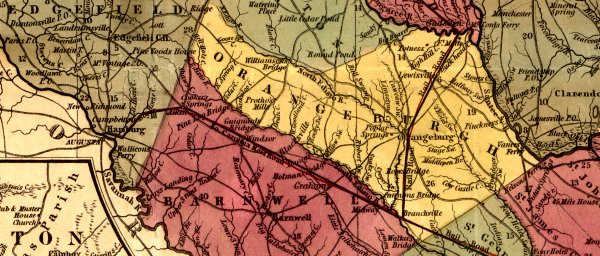
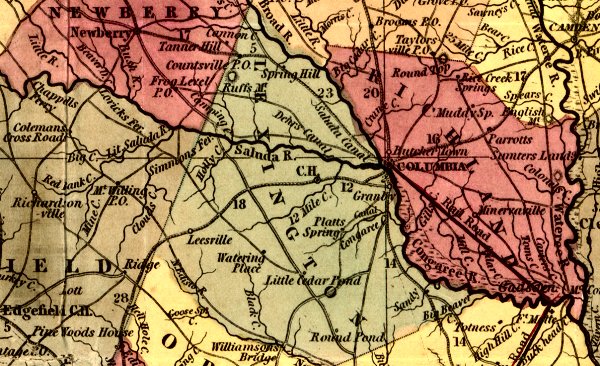


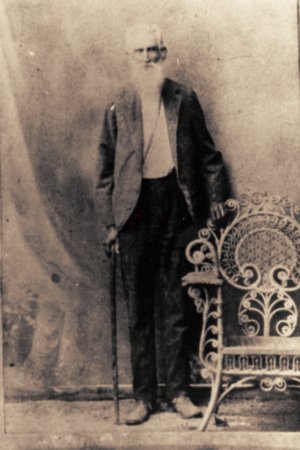 Mathew A. Seay was a son of Michael Seay and his wife Clarissa (Clark) Seay. He was born on March 30, 1820 or 1821, probably in Rutherford County, Tennessee. By the time he was ten years old, his family had removed to nearby Hardin County, Tennessee.
Mathew A. Seay was a son of Michael Seay and his wife Clarissa (Clark) Seay. He was born on March 30, 1820 or 1821, probably in Rutherford County, Tennessee. By the time he was ten years old, his family had removed to nearby Hardin County, Tennessee.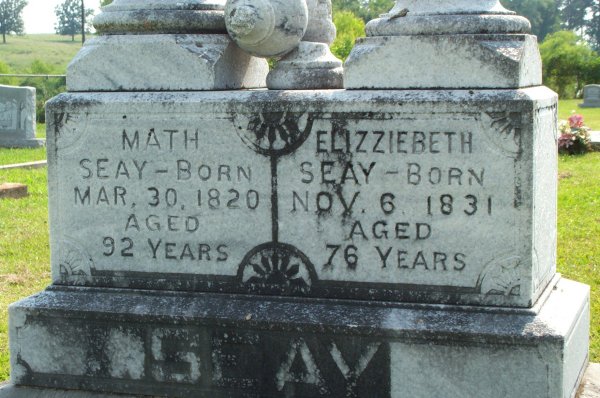
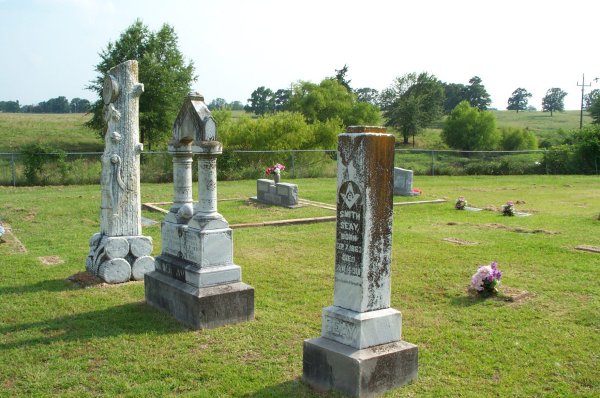
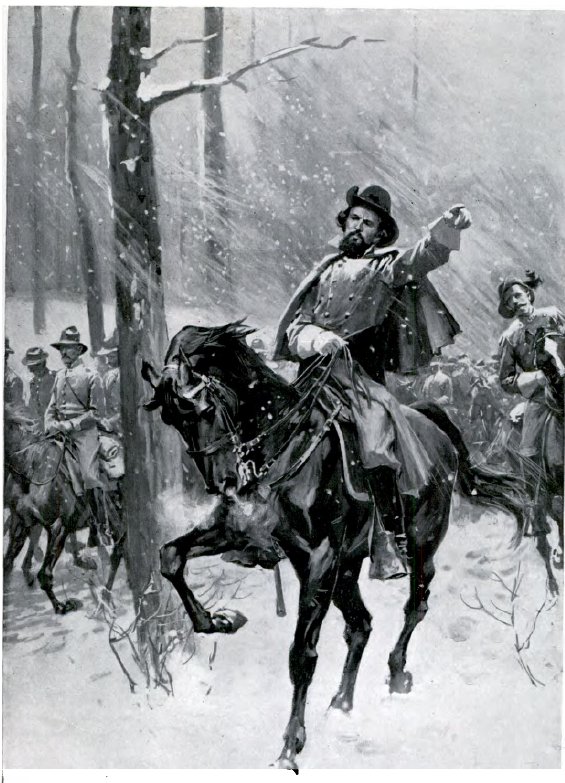
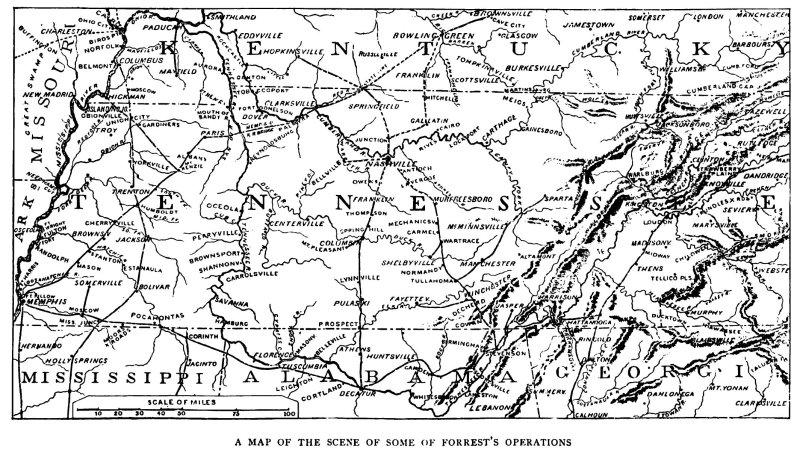
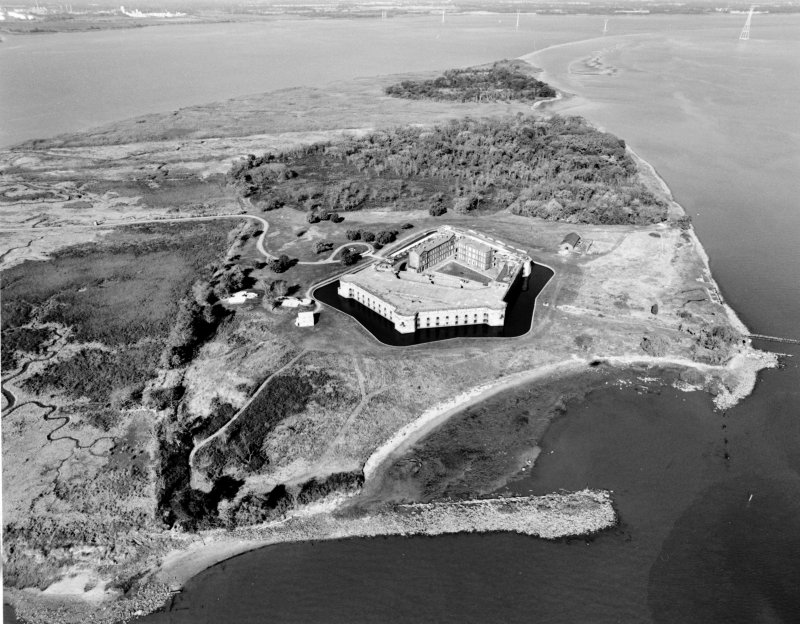
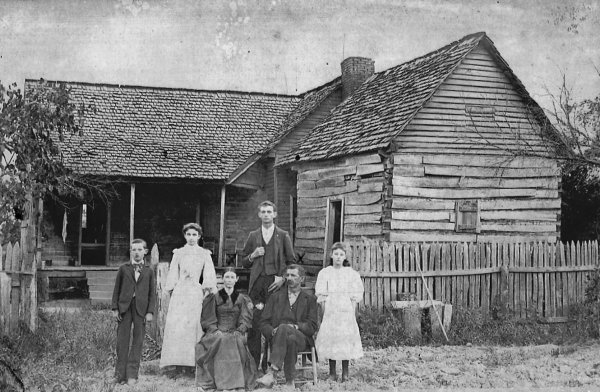
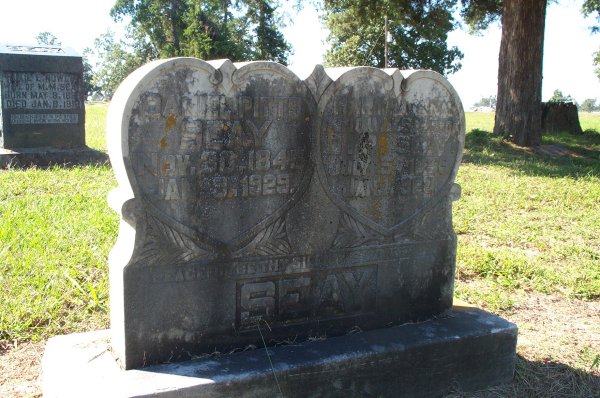
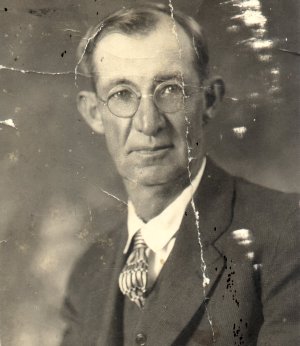 Matthew Elijah Seay, born July 5, 1870 in Lee County, Mississippi, was the eldest child of Daniel Pitts Seay, a Confederate veteran, and his first wife, Maria Elizabeth (Dancer) Seay. The couple's only other child, a girl, died in infancy.
Matthew Elijah Seay, born July 5, 1870 in Lee County, Mississippi, was the eldest child of Daniel Pitts Seay, a Confederate veteran, and his first wife, Maria Elizabeth (Dancer) Seay. The couple's only other child, a girl, died in infancy.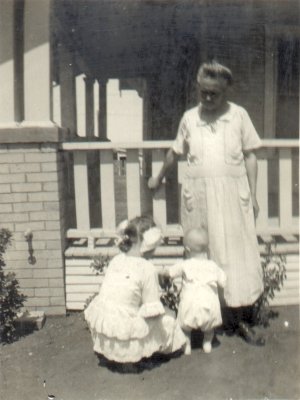 This family moved quite a bit, probably as a consequence of Matthew E. Seay's occupation: house carpenter. The first child, Ernest, was born in Gorman, Texas, a little town West Texas (Eastland County). The second, Willie, was born in Big Sandy, Upshur County, Texas. We do not know where the twins were born. Sidney Seay was born in Blossom, Lamar County, Texas and according to at least one source, so was her younger sister Ida Lee. Another source says Ida Lee was born in Wilburton, Choctaw Lands (later Latimer County), Oklahoma Territory (later the State of Oklahoma). A third source says Hugo, which is probably correct. We can be reasonably sure, however, that Nellie, Maude and Buck were born in Wilburton. Maggie was born in Mount Pleasant, Titus County, Texas.
This family moved quite a bit, probably as a consequence of Matthew E. Seay's occupation: house carpenter. The first child, Ernest, was born in Gorman, Texas, a little town West Texas (Eastland County). The second, Willie, was born in Big Sandy, Upshur County, Texas. We do not know where the twins were born. Sidney Seay was born in Blossom, Lamar County, Texas and according to at least one source, so was her younger sister Ida Lee. Another source says Ida Lee was born in Wilburton, Choctaw Lands (later Latimer County), Oklahoma Territory (later the State of Oklahoma). A third source says Hugo, which is probably correct. We can be reasonably sure, however, that Nellie, Maude and Buck were born in Wilburton. Maggie was born in Mount Pleasant, Titus County, Texas.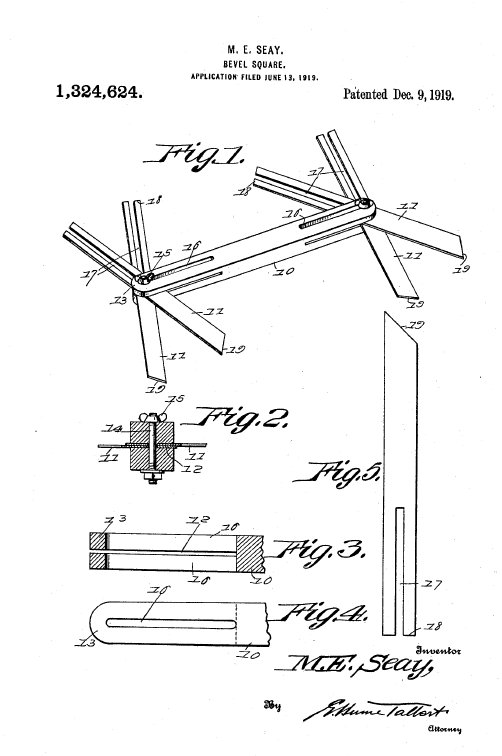
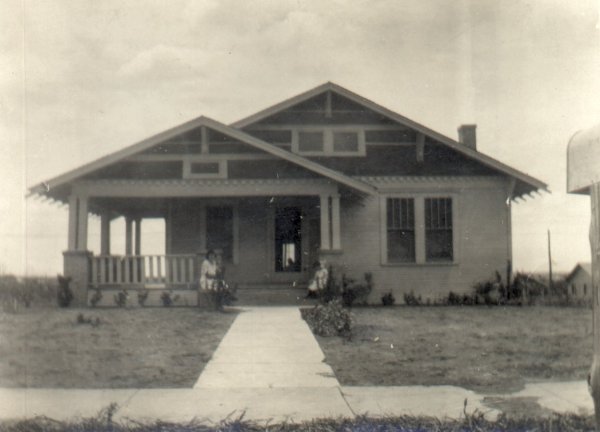
-small.jpg)
